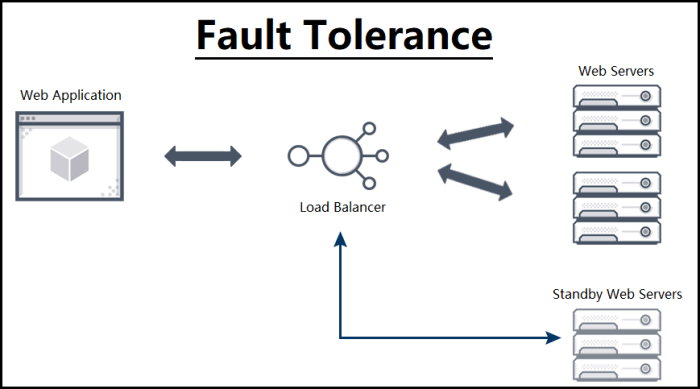The “replace architecture” anti-pattern represents a significant risk in software development. It often arises from a desire for rapid modernization, but frequently leads to unforeseen complications and decreased maintainability. This in-depth exploration will examine the core characteristics of this anti-pattern, its consequences, and effective alternatives. Understanding the pitfalls of replacing architecture is crucial for building robust and scalable software systems.
This analysis delves into the intricacies of this anti-pattern, dissecting its motivations, consequences, and practical implications for developers and architects. We’ll explore real-world examples and offer actionable strategies for avoiding and mitigating its negative impacts.
Defining the Anti-Pattern
The “replace architecture” anti-pattern emerges when a system’s architecture is fundamentally altered by replacing existing components or modules with entirely new ones without proper consideration of the broader system implications. This approach often leads to unforeseen complexities, integration challenges, and ultimately, a less robust and maintainable solution. It frequently results in a system that, while superficially improved, suffers from a lack of cohesive design and can be difficult to debug or modify.This anti-pattern contrasts with architectural approaches that emphasize incremental improvements and evolutionary design.
Instead of a complete overhaul, these approaches advocate for iterative development and adaptation of existing components, leading to a more stable and adaptable architecture over time. A crucial difference is the focus on modularity and reusability within the original design, avoiding complete replacements unless absolutely necessary.
Characteristics of Replace Architecture
The “replace architecture” anti-pattern is characterized by several key attributes:
- A fundamental shift in the system’s core components, replacing them entirely instead of adapting or extending them. This often involves significant rework, re-engineering, and substantial effort to integrate the new components into the existing system.
- Lack of thorough planning and analysis prior to the replacement. Often, the replacement is driven by immediate perceived needs or perceived shortcomings of the existing architecture, without a comprehensive evaluation of the overall system impact. This can lead to unforeseen dependencies and integration problems.
- Poor integration with existing components. The replacement may not adequately integrate with the existing system’s components, resulting in gaps, inconsistencies, and potentially, complete failure of the entire system. This may manifest as incompatibility issues, missing functionality, or unpredictable behavior.
- Increased complexity and maintenance burden. The process of replacing components can introduce new complexities and make the system more difficult to maintain, debug, and understand. Changes made to one part of the system may have unexpected effects on other parts due to lack of cohesive design.
Motivations for Adopting Replace Architecture
Developers may be tempted to adopt the “replace architecture” anti-pattern for various reasons, often stemming from a desire for immediate improvement or perceived efficiency:
- Perceived Performance Bottlenecks: A developer might feel a component is significantly hindering performance and believe a complete replacement is the fastest path to improvement, overlooking the possibility of optimization or refactoring of the existing component.
- Technological Advancement: The allure of new technologies or tools can drive a desire to replace existing components with those built around newer technologies, potentially without a proper assessment of compatibility or cost-effectiveness.
- Unfamiliarity with the Existing System: A developer new to the system might perceive the existing architecture as complex or difficult to understand, leading to the belief that a complete replacement is the most straightforward approach.
- Short-term Gains over Long-term Sustainability: The immediate benefits of a replacement may seem appealing, but this approach can lead to significant long-term maintenance issues and a lack of adaptability to future changes.
Common Scenarios
The “replace architecture” anti-pattern can manifest in various software development scenarios:
- Legacy System Upgrades: Attempting to replace entire legacy systems with modern ones without a careful assessment of the impact on existing integrations, data migration, and user workflows. This can be especially problematic when the existing system is tightly coupled with other applications.
- Agile Development with Poor Planning: In a fast-paced Agile environment, the pressure to deliver quickly can lead to the replacement of components without sufficient planning or testing. This often results in integration problems and regressions.
- Microservices Transformation: While microservices can offer significant benefits, replacing an entire monolithic application with a microservices architecture without considering service boundaries and interdependencies can lead to significant integration issues and a lack of cohesion.
- Refactoring without Design: A lack of architectural planning before refactoring a system can easily lead to the “replace architecture” anti-pattern. The refactoring process can quickly turn into a wholesale replacement if proper modularity and design are not maintained.
Consequences of Applying the Anti-Pattern

The “replace architecture” anti-pattern, while potentially tempting for rapid prototyping or short-term solutions, often leads to significant and long-term problems. This approach prioritizes immediate expediency over long-term maintainability and scalability, resulting in a brittle and inflexible system. The repercussions extend beyond just the initial implementation, impacting every subsequent phase of development and maintenance.Applying the “replace architecture” anti-pattern often results in a cascade of negative impacts on software maintainability.
Developers are forced to adapt and modify existing codebases in an ad-hoc manner, introducing inconsistencies and hidden dependencies. This makes it exceedingly difficult to understand the intricate workings of the system and potentially leads to unforeseen errors when modifications are made.
Negative Impacts on Software Maintainability
The “replace architecture” approach frequently leads to a loss of code cohesion. Modular design principles are often disregarded, and components are interconnected in a way that is difficult to comprehend and modify. This results in a high degree of interdependence between various parts of the system, making it challenging to update or refactor any single component without causing unforeseen issues elsewhere.
This is further exacerbated by a lack of proper documentation, making it hard to understand the logic behind the code. As a result, maintenance becomes significantly more complex and error-prone.
Challenges in Future Development and Enhancements
The “replace architecture” strategy makes future development and enhancements exceedingly difficult. As the system grows and evolves, the haphazard nature of the architecture becomes increasingly problematic. Adding new features or modifying existing ones can trigger unforeseen issues, as the interactions between the various components become less predictable. Moreover, the lack of a well-defined architecture makes it difficult to plan and execute future enhancements, as developers are unsure of the potential impact of their changes on the existing codebase.
Potential Risks to Overall System Stability
The “replace architecture” approach carries a significant risk to the overall stability of the system. The ad-hoc nature of the changes can lead to unforeseen interactions and conflicts between different components, potentially causing unexpected errors or even system crashes. Moreover, the lack of comprehensive testing during the replacement process can introduce bugs and vulnerabilities into the system. This poses a significant risk to the reliability and integrity of the software application.
Difficulties in Scaling the System
Scaling the system becomes an insurmountable challenge when using the “replace architecture” approach. The absence of a well-defined architecture makes it difficult to predict how the system will perform under increasing loads. The system is often built to accommodate a specific, limited set of conditions, making it challenging to adapt to changing requirements and increasing user demand. Moreover, the lack of modularity hinders the ability to distribute tasks and processes across multiple servers or machines.
Challenges Related to Testing and Debugging
Testing and debugging the software becomes extremely difficult when the architecture is not well-defined. The lack of modularity and the interconnectedness of components make it challenging to isolate and test individual parts of the system. Moreover, the absence of clear boundaries between components can lead to a multitude of subtle bugs that are difficult to detect and fix.
The “replace architecture” anti-pattern significantly hinders the ability to test and debug the software efficiently.
Mitigation Strategies
The “replace architecture” anti-pattern, while tempting in the short term, often leads to significant long-term problems. Effective mitigation strategies focus on gradual architectural evolution, minimizing disruption, and preserving existing functionality. This approach allows for the introduction of new components and technologies without jeopardizing the entire system.Addressing the “replace architecture” anti-pattern requires a structured, phased approach to architectural change.
This involves careful planning, thorough testing, and meticulous management of dependencies. A critical aspect is the preservation of existing functionality throughout the transition, preventing downtime or service degradation.
Phased Approach to Architectural Evolution
A phased approach ensures a controlled transition, minimizing risks associated with large-scale changes. This involves breaking down the replacement process into smaller, manageable steps, allowing for thorough testing and validation at each stage.
- Assessment and Planning: Thoroughly analyze the current architecture, identifying dependencies and potential risks. Develop a detailed plan outlining the steps involved in the transition, including timelines, resource allocation, and communication strategies. This phase is crucial for accurate estimation and risk mitigation.
- Incremental Replacement: Introduce new components or modules gradually, replacing existing functionality piece by piece. This strategy allows for continuous testing and validation, minimizing the risk of unforeseen issues. Testing should be performed at each step to confirm that the system continues to function as expected.
- Comprehensive Testing: Conduct rigorous testing at each stage to ensure the new components integrate seamlessly with existing ones. This testing should cover various scenarios, including edge cases and high-load situations. Comprehensive testing is essential to prevent unforeseen issues that might arise during the replacement process.
- Rollback Strategy: Develop a robust rollback strategy to revert to the previous architecture if issues arise during the transition. This ensures minimal disruption in case of unexpected problems, and allows for quick recovery if necessary.
Maintaining Existing System Integrity
Maintaining the integrity of the existing system during the replacement process is paramount. This includes carefully managing dependencies, preserving existing functionality, and ensuring smooth transitions.
- Dependency Management: Document and analyze all dependencies between existing components and new ones. This will help prevent unintended consequences and maintain the stability of the system during the transition. The goal is to identify and address all dependencies before proceeding.
- Backward Compatibility: Design the new components to maintain backward compatibility with the existing system. This will prevent disruption to existing functionalities and ensure a smooth integration process. New components should be able to interact with older components without causing errors.
- Phased Integration: Implement new components in a phased manner, ensuring minimal impact on the current system. This allows for gradual integration and reduces the risk of major issues during the transition. It is essential to have a clear plan for how the components will be integrated.
Transitioning to a More Suitable Architecture
Transitioning from the “replace architecture” approach to a more suitable alternative necessitates a strategic shift in perspective. This involves identifying and addressing the root causes that led to the desire to replace the architecture.
- Root Cause Analysis: Investigate the reasons behind the desire to replace the architecture. This may involve examining performance bottlenecks, scalability issues, or technical debt. Understanding the reasons behind the desire to replace the architecture is essential for creating a more suitable alternative.
- Alternative Architectural Design: Develop a more suitable architecture that addresses the identified issues. This might involve adopting a microservices architecture, a cloud-native approach, or a different technology stack. Consider the long-term implications of the new architecture to ensure it meets future needs.
- Iterative Refinement: Continuously refine the new architecture based on feedback and experience. This iterative approach allows for adaptations and improvements as the system evolves and new requirements emerge. The goal is to develop a flexible architecture that can adapt to future needs.
Best Practices to Avoid the Anti-Pattern
The “replace architecture” anti-pattern arises from a tendency to hastily overhaul existing systems without careful consideration. This often leads to unforeseen complexities, increased development time, and ultimately, a less robust and maintainable solution. Avoiding this anti-pattern hinges on a proactive and systematic approach.Careful planning and design are crucial for successful software development. A well-defined strategy, including a clear understanding of the project scope, desired outcomes, and potential roadblocks, significantly reduces the likelihood of encountering problems later.
Importance of Thorough Planning
Proactive planning and design are essential for avoiding the “replace architecture” anti-pattern. A comprehensive understanding of the existing system’s architecture, functionality, and dependencies is paramount. This includes not just the code but also the underlying infrastructure, data models, and user interfaces. Analyzing the current architecture for strengths and weaknesses, identifying potential integration points, and meticulously documenting the plan are key steps.
Thorough planning allows for a phased approach, mitigating risks associated with large-scale changes.
Understanding System Impact
A critical aspect of avoiding the “replace architecture” anti-pattern is a thorough understanding of how changes in one part of the system will affect other parts. A ripple effect can emerge, causing unforeseen consequences in unrelated modules, databases, or external integrations. A comprehensive impact analysis, considering all potential dependencies and interactions, is crucial. This proactive approach helps anticipate and address potential problems before they escalate.
Tools and techniques for impact analysis should be employed to identify and manage these potential issues.
Proper Documentation and Communication
Effective documentation and communication are essential throughout the development process. Clear documentation outlining the reasons for the proposed changes, the expected outcomes, and any potential risks, ensures everyone involved understands the implications. Regular communication channels facilitate feedback and address concerns early, minimizing misunderstandings and conflicts. This collaborative approach fosters a shared understanding and allows for timely adjustments to the plan as needed.
Comprehensive documentation of the entire process, including detailed design specifications, user stories, and testing procedures, ensures clarity and traceability.
Thorough Testing and Validation
Thorough testing and validation are crucial for ensuring the new architecture is stable and reliable. Comprehensive testing procedures should be defined and executed at every stage of the development lifecycle, from unit testing individual components to integration testing the interaction between different modules. This iterative approach to testing ensures that the new architecture is robust and functions as intended.
Rigorous testing also helps uncover potential vulnerabilities and errors, allowing for timely fixes and enhancements. Rigorous testing of the new architecture against the original system’s functionalities and performance metrics is essential to ensure that the replacement does not introduce unforeseen issues.
Tools and Technologies for Architecture Analysis

Effective architectural analysis is crucial for mitigating the “replace architecture” anti-pattern. Proactively understanding the existing system’s strengths and weaknesses empowers teams to avoid costly and disruptive refactoring. Tools and technologies play a vital role in this process, enabling a deep dive into the system’s intricacies and dependencies.Understanding the current architecture is not simply a theoretical exercise. A comprehensive analysis of the existing system is critical to identifying potential points of vulnerability and areas where a “replace architecture” approach might be inappropriate.
A thorough evaluation can uncover existing features, components, and integrations that may be more efficient and cost-effective to enhance than to completely replace. This proactive assessment helps prevent the detrimental effects of the “replace architecture” anti-pattern.
Architectural Modeling Tools
Several tools facilitate the visualization and analysis of software architectures. These tools provide a visual representation of the system’s components, relationships, and dependencies. This visualization allows for a more holistic understanding of the system’s intricacies.
- Enterprise Architect: A popular tool for creating and managing complex diagrams. It supports a wide range of diagrams, including class diagrams, component diagrams, deployment diagrams, and sequence diagrams. This comprehensive support allows for a thorough architectural representation.
- draw.io: A free and web-based tool for creating various diagrams, including system architecture diagrams. It is particularly useful for collaborative environments and quick prototyping of architecture concepts. Its accessibility makes it a valuable option for teams needing a straightforward solution for visualizing their architecture.
- PlantUML: A lightweight tool for creating diagrams using plain text. This tool simplifies the creation of diagrams, making it ideal for situations where a textual approach is preferred. The text-based approach can be very beneficial for documentation and collaboration.
- Archimate: A comprehensive modeling tool focused on enterprise architecture. It is particularly well-suited for organizations with a large, complex IT infrastructure, enabling them to visualize the entire IT landscape. This allows for a thorough understanding of the interconnectedness of different components within the enterprise.
Dependency Analysis Tools
Identifying dependencies within the architecture is crucial for assessing the impact of changes. Dependency analysis tools help visualize and quantify these relationships, which is critical in evaluating the cost and effort associated with potential refactoring efforts.
- Dependency Graph Visualization Tools: Many tools are available that can create dependency graphs based on code or configuration files. These graphs provide a clear picture of how different components interact and rely on each other. Visualizing these dependencies helps understand the scope of potential disruption when making changes.
- Code Analysis Tools: Tools like SonarQube, Checkstyle, and FindBugs are designed to analyze code and identify dependencies. These tools can help pinpoint complex dependencies that may be indicative of potential issues.
Benefits of Using Architectural Analysis Tools
Using these tools provides several benefits, such as:
- Improved Understanding of the Existing Architecture: Tools facilitate a deeper comprehension of the system’s structure and relationships, which is essential for evaluating whether a complete replacement is the optimal solution.
- Identification of Potential Issues: Visualizations of dependencies and components highlight potential problems that might be overlooked in manual assessments. This can be very valuable for risk mitigation.
- Reduced Risk of Disruption: By identifying dependencies and interactions, tools help teams understand the impact of changes, reducing the risk of unexpected problems and failures during refactoring.
- Facilitated Communication and Collaboration: Visualization tools aid in communicating the architecture to stakeholders and facilitate collaboration among development teams.
Preventing the Anti-Pattern with Tools
By utilizing architectural analysis tools, teams can actively avoid the “replace architecture” anti-pattern.
- Thorough Analysis: Tools aid in a comprehensive understanding of the existing architecture, enabling a better assessment of whether the current system can be enhanced or requires a complete replacement.
- Dependency Mapping: Visualizing dependencies allows teams to understand the potential impact of changes, making a replacement less attractive.
- Proactive Assessment: Early identification of potential problems through analysis tools encourages a more measured approach to architecture improvements, reducing the risk of a premature replacement.
Case Studies of the Replace Architecture Anti-Pattern
The “replace architecture” anti-pattern, while seemingly a quick fix, often leads to unforeseen complexities and increased development costs. Understanding real-world case studies provides valuable insights into the pitfalls and potential mitigation strategies. Examining successful and unsuccessful implementations illuminates the factors that contribute to success or failure in adopting a new architecture.
Case Study Examples
The following table presents hypothetical case studies to illustrate the “replace architecture” anti-pattern. These are simplified representations but highlight common characteristics.
| Case Study | Description of the Replacement | Impact and Consequences | Mitigation Strategies | Analysis of Causes |
|---|---|---|---|---|
| E-commerce Platform Upgrade | A company migrated from a legacy e-commerce platform to a newer, cloud-based platform, replacing all existing functionalities. | Significant downtime and loss of sales during the migration. Integration issues with third-party systems caused delays and errors. Training and onboarding of staff were costly and time-consuming. | Phased implementation of the new platform, parallel running with the legacy system for a period, careful testing and validation of integrations. Thorough user training and documentation were crucial. | Insufficient planning and risk assessment. Lack of a clear migration strategy. Inadequate testing of the new platform and its integration with existing systems. Failure to involve key stakeholders in the process. |
| CRM System Replacement | A company replaced its legacy customer relationship management (CRM) system with a new, feature-rich system. | Data migration errors resulted in significant data loss. The new system’s complexity created usability issues and decreased productivity for employees. Significant training investment was required. | A comprehensive data migration plan with robust validation checks. Gradual implementation, allowing for employee adaptation and feedback. Pilot programs with smaller teams. Continuous monitoring and adjustments. | Overestimation of the new system’s capabilities. Insufficient attention to data migration and validation. Failure to consider the impact on existing workflows. Insufficient communication and feedback loops. |
| Enterprise Resource Planning (ERP) System Update | An organization updated its existing ERP system with a new version. | Integration issues with other systems. Significant delays in the upgrade process. Lack of sufficient training for staff resulted in decreased productivity and errors. | A detailed integration plan that addressed potential issues with legacy systems. A phased implementation strategy, allowing for thorough testing and validation at each stage. Regular communication and feedback loops with stakeholders. | Poor planning and risk assessment. Inadequate understanding of the complexity of the existing systems. Failure to conduct thorough testing of the new version. |
Analyzing Real-World Examples
Identifying the root causes of the “replace architecture” anti-pattern in real-world examples requires a systematic approach. The process involves several key steps:
- Data Collection: Gather information about the system, its architecture, the rationale behind the replacement, and the timeline. This includes documentation, interview transcripts, and any available project reports.
- Stakeholder Interviews: Speak with individuals involved in the decision-making process, the implementation team, and end-users to understand their perspectives and experiences.
- Architectural Review: Analyze the system architecture, identifying dependencies, integrations, and potential points of failure. Consider the existing processes and workflows that the system supports.
- Impact Assessment: Evaluate the impact of the replacement on various stakeholders, including users, developers, and the business as a whole. Identify potential risks and consequences.
- Lessons Learned: Extract key lessons learned from the experience to prevent similar issues in future projects.
Real-World Scenario
Imagine a retail company that decides to completely replace its point-of-sale (POS) system with a new, cloud-based solution. The company did not adequately plan for the migration of existing customer data, leading to inaccurate inventory tracking and customer relationship management issues. This ultimately resulted in a loss of revenue and customer dissatisfaction.
Practical Implementation Guidance

Preventing the “replace architecture” anti-pattern requires a proactive and systematic approach to software development. This involves understanding the limitations of current architecture, anticipating future needs, and implementing incremental changes that maintain stability and avoid disruptive overhauls. A thoughtful, iterative approach ensures the system evolves organically rather than being abruptly replaced.A crucial aspect of this approach is a clear understanding of the system’s current state and potential future requirements.
By carefully considering the trade-offs between immediate needs and long-term scalability, organizations can develop a robust architecture capable of handling future growth and change without the need for a complete replacement.
Step-by-Step Procedures for Preventing the Anti-Pattern
This methodical approach Artikels a sequence of steps for preventing the “replace architecture” anti-pattern:
- Thorough Assessment of Current Architecture: Identify the strengths and weaknesses of the existing architecture. Analyze its limitations, performance bottlenecks, and scalability issues. Document these findings comprehensively.
- Future Requirements Analysis: Forecast potential future requirements for the system. Consider anticipated growth in data volume, user base, or functionalities. This analysis should involve input from stakeholders across different departments.
- Modular Design Principles: Design the system with modularity in mind. Independent modules can be added, modified, or replaced without impacting other parts of the system. This enables future enhancements without requiring a complete rewrite.
- Incremental Changes and Iterative Development: Implement changes incrementally, testing each module thoroughly before integrating it into the main system. This iterative approach ensures stability and allows for adaptation to changing requirements without disruptive replacements.
- Regular Architecture Reviews: Schedule regular reviews of the system architecture. This allows for ongoing evaluation of the system’s design and identification of potential future issues before they become significant problems.
Flowchart for Guiding Architecture Decisions
A structured flowchart can guide decisions regarding system architecture. This flowchart ensures a systematic approach, incorporating both short-term and long-term considerations.[A simple flowchart image would be placed here, depicting a decision tree. The flowchart should have branches for: (1) Analyzing current architecture, (2) Forecasting future needs, (3) Evaluating modularity, (4) Planning incremental changes, and (5) Reviewing and adapting the architecture.
Each branch should lead to subsequent actions and decisions.]
Implementing Incremental Changes in Architecture
Implementing incremental changes requires careful planning and execution. Each change should be tested thoroughly before integration to minimize disruption and maintain stability.
- Version Control: Utilize version control systems to track changes and revert to previous versions if necessary. This allows for easy rollback if a change introduces unforeseen issues.
- Testing and Validation: Establish comprehensive testing procedures for each incremental change. This ensures that the new functionality works as expected and does not negatively impact existing functionalities.
- Phased Rollouts: If possible, deploy changes in phases to a subset of users or environments. This allows for testing the changes in a controlled environment before deploying them to the entire system.
Approaching System Design with Modularity and Extensibility
Modular design and extensibility are key to preventing the “replace architecture” anti-pattern. A modular approach makes the system easier to understand, modify, and extend.
- Defined Interfaces: Clearly define interfaces between modules to ensure communication and data exchange. This allows modules to be swapped or enhanced without impacting other components.
- Independent Components: Design independent components that can be developed, tested, and deployed separately. This reduces the complexity of integration and allows for faster development cycles.
- Flexible Data Structures: Design data structures that can adapt to future changes in data types or formats. This prevents the need to redesign the entire system when the data requirements evolve.
Making Informed Decisions About Architecture Upgrades
Architecture upgrades should be planned carefully, considering both short-term and long-term implications. Avoiding a complete overhaul is essential.
- Evaluating Upgrade Costs: Thoroughly evaluate the cost of an upgrade, including the time required for development, testing, and deployment. Consider the potential disruption to existing operations.
- Impact Analysis: Analyze the impact of the upgrade on existing functionalities and user workflows. Identify potential risks and mitigation strategies.
- Pilot Programs: Conduct pilot programs to test the upgrade in a controlled environment before deploying it to the entire system. This allows for gathering feedback and identifying any potential issues.
Last Word
In conclusion, the “replace architecture” anti-pattern highlights the importance of thoughtful architectural planning and incremental improvements. Prioritizing maintainability, scalability, and testability throughout the development lifecycle is paramount. By understanding the potential pitfalls and adopting suitable alternatives, developers can create more resilient and sustainable software solutions. This discussion emphasizes the crucial role of comprehensive planning, thorough testing, and continuous evaluation in achieving long-term success.
Popular Questions
What are some common triggers for adopting the “replace architecture” anti-pattern?
Often, a perceived need for significant performance enhancements or a desire to incorporate cutting-edge technologies can drive developers towards wholesale replacements. However, this approach frequently overlooks the existing system’s complexity and the interdependencies within the architecture.
How does this anti-pattern impact testing and debugging?
Replacing the architecture without a phased approach often creates significant complexities in testing and debugging. The intricate interconnections between components and the sheer volume of code changes make isolating and resolving issues significantly more difficult. This can lead to costly and time-consuming rework.
What are some indicators that a system is susceptible to the “replace architecture” anti-pattern?
Signs of potential problems include a lack of clear documentation for the existing architecture, a history of frequent and large-scale code changes, and a perceived urgency to implement rapid changes without proper assessment.
Beyond the technical aspects, what are the organizational or cultural factors that contribute to this anti-pattern?
Organizational pressures, tight deadlines, or a lack of understanding of the long-term implications of architectural changes can contribute to the adoption of the “replace architecture” approach. Effective communication and a focus on sustainable development practices are crucial for mitigating this risk.


